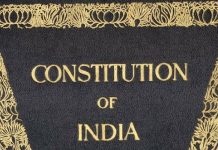This article is written by Aparajita Gupta who is pursuing a Certificate Course in Arbitration: Strategy, Procedure and Drafting from LawSikho.
Table of Contents
Introduction and Background to the New Act of 2019
Originally, the Parliament had passed the Arbitration and Conciliation Bill of 2018 in August of that year itself. But due to the approaching elections and dissolution of both the houses the Bill of 2018 was reintroduced as the Arbitration and Conciliation Bill 2019 with a few minor changes and received the assent of Parliament and the President on the 9th of August 2019 making it the Arbitration and Conciliation Act, 2019. The Bill was the result of the High-Level Committee chaired by Justice. B. N Srikrishna.
One of the reasons for bringing about the 2019 amendment was to resolve certain discrepancies and ambiguities in the interpretation of the 2015 Amendment. Another reason was to reverse the effect of Hindustan Construction Co. v. Union of India (2019) that had struck down Section 87 of the Act which in turn was brought about to reverse the judgement of BCCI v. Kochi Cricket (2018). However, the foremost reasons for the new Amendment was to institutionalize arbitration and make India a hub for international commercial arbitration.
In this article we will discuss the major changes brought about by the new Act with specific focus on the shift of “Role of Court” in the process of Arbitration.
Major Amendments
- Introduction of Arbitral Institutions and Arbitration Council of India
The first change brought about is with respect to addition of the definition of “Arbitral Institution” under Section 2(ca) meaning an arbitral institution designated by the Supreme Court or High Court under the Act. This instrumental change has been introduced to streamline the process of appointing arbitrators by shifting the power from the Supreme Court (in case of ICA) and High Courts (in case of domestic arbitrations) to the Arbitration Council of India (ACI).
Further, Part 1A of the new Act introduces the Arbitration Council of India. The ACI will be formulated as a government body that shall hold a repository of all the awards. Further, it shall appoint the arbitrators, grade the existing arbitral institutions, maintain a panel of arbitrators along with sector specific arbitrators and frame policies for a smooth functioning (Section 43D). Section 43C provides for the members of the Council consisting of a Chairperson who shall either be a Judge of the Supreme Court, Judge of the High Court or Chief Justice of a High Court or an eminent person with expert knowledge in conduct of arbitration. The Chairperson shall be appointed by the Central Government in consultation with the Chief Justice of India. The ACI shall have other members of the industry from both domestic and international accreditation and other ex-officio members.
- Power to appoint of Arbitrators with Arbitral Institutions
Section 11 (3A) has been added that gives the Supreme Court and High Court the power to designate arbitral institutions from time to time that have been graded by the Arbitration Council of India. In case, there is no such arbitral institution available for the particular jurisdiction, the Chief Justice of that High Court must refer an arbitrator from the panel of arbitrators maintained for this purpose. Similarly, subsection (4) entails that the application for appointment of the arbitral tribunal would be made to the designated arbitral institution of the jurisdiction. Subsection (6) further specifies that for an ICA the application should be made to an institution designated by the Supreme Court and for a domestic arbitration, to an institution designated by the High Courts.
- Reduction in power of Courts
The erstwhile Section 6(A) that mandated courts to not go into the facts of the case while hearing a Section 11 application, but to restrict their judicial scrutiny to the existence of a valid arbitration clause/agreement was completely omitted by the amendment. Earlier, the courts had to strictly restrict themselves to ruling on the ‘existence’ of an arbitration agreement. However, this was digressed from several times in cases like United India Insurance Co. Ltd. and Ors v. Hyundai Engineering and Construction Co. Ltd. and Ors. The section was made redundant by the introduction of ACI as such bodies do not have judicial powers. Similarly, subsection (7) has also been repealed that previously made final the decision of a court hearing a Section 11 application leaving no scope of a second appeal. This section was also made redundant by the introduction of ACI as there cannot be any appeal to an appointment by an institution.
However, what remains the same is the time limit which was 30 days for the courts to discharge a Section 11 application. The particular institution must dispose of the application within a period of 30 days from the date of service of notice on the opposite party. However, despite such a provision being in place, there are still many Section 11 applications pending before the respective courts. This practice is most likely to be carried forward as the amended section also does not provide for any consequence of such pendency.
Further, Section 17 entailing interim measures by the arbitral tribunal, has been amended to remove the words “or at any time after the making of the arbitral award but before it is enforced in accordance with Section 36”. This is a welcome move as now it is clear based on the principle of functus officio that the function of the arbitral tribunal ends in their official capacity once the final award has been given. In other words, the mandate of the arbitral award gets terminated once the final award is given and the time-period of 30 days to make modifications and corrections is over. For any relief beyond this period, the parties must approach the courts of their jurisdiction under Section 9 for interim reliefs.
- Relaxation of time limits to 12 months
Coming to the timelines, Section 29(A) has been amended to make the time limit of completion of the arbitral proceedings and passing of the final award within a period of 12 months from completion of pleadings under Section 23(4). The pleadings under 23(4) include filing of statement of claim and defense within a period of 6 months. In other words, the time limit under Section 29(A) starts after completion of 6 months under Section 23(4). Further, sub-section (3) provides for a mutual extension by both the parties for a period of 6 months. The role of courts come into play when the award has still not been made in the total of 18 months. What is to be noted is that, the mandate of the arbitral tribunal comes to an end if an extension has not been made before or at the expiry of the time-period. In the event the court deems fit to reduce the fee of the arbitrator, it may do so after giving them a chance to be heard.
- Miscellaneous amendments and additions to Section 34, 42A, 42B
Under Section 34, application for setting aside arbitral awards, the words “establishes on the basis of the record of the arbitral tribunal that” have been added. This was an important addition to ensure that during court proceedings of challenging an arbitral award no new evidence is presented. The order must be made on existing evidence with the arbitral tribunal.
Apart from these changes in the existing sections, there have also been additions to the Act by way of Section 42A and 42B. The former mandated confidentiality for arbitral proceedings except when necessary for the purpose of implementation/enforcement of award. And the latter gives protection to the arbitrator from legal action for acting in good faith.
Lastly, what is important to remember is that since there has been no grading of the institutions, nor has the ACI been formulated, the 2015 Section 11 is still in existence and followed for appointment of arbitrators presently. This also means that Part 1A cannot be implemented until further such developments.
Conclusion
In conclusion, the amendments to the 2015 Act are vastly welcome and aim at clarifying the position that existed previously. The idea of institutionalizing the entire process of arbitration will not only speed up the procedures but will also make way for more international arbitrations seated in India owing to simpler procedures. However, there are also certain concerns such that the ACI would lack complete independence as all the members of the body shall be appointed by the Government. Considering that the biggest arbitrations in India are against the Government, this level of interference in the authorities will not make it a transparent process but rather leave room for corruption and influence. This is one of the main causes for concern as it goes against the entire intent behind the concept of Arbitration.
Since the inception of the 1996 Act, there has been a constant tussle and debate on the interference of courts in the arbitration process. Despite the statute providing for it under Section 6A, there were many such instances where the courts had blatantly violated it. With such a level of Government representation within the ACI, it makes it difficult to call this process entirely party autonomous, transparent and independent. Further, the confusion Section 87 which was introduced by the 2019 amendment also came to an end by the three-bench judgement of Hindustan Construction Company Ltd. v. Union of India (2019) which repealed the provision once and for all.
Overall, we can see the trend of arbitration changing and the court interference reducing. However, does the ACI prove to be a game changer is yet to be seen.
References
- https://www.latestlaws.com/arbitration/role-of-court-under-the-arbitration-conciliation-amendment-act-2019/#:~:text=%241.2%20Billion%20payoff-,Elephant%20in%20the%20room%3A%20Role%20of%20Court%20under%20the%20Arbitration,%2C%202019%2C%20by%20Tuli%20%26%20Co&text=In%20fact%2C%20the%20Courts%20from,dispute%20before%20appointing%20an%20arbitrator.
- https://www.mondaq.com/india/arbitration-dispute-resolution/856642/the-arbitration-and-conciliation-amendment-act-2019-entering-a-new-domain
- https://www.mondaq.com/india/court-procedure/845782/salient-features-of-the-arbitration-and-conciliation-amendment-bill-2019
- https://www.clydeco.com/en/insights/2019/12/arbitration-conciliation-act-of-india-2019-intent
- https://www.prsindia.org/billtrack/arbitration-and-conciliation-amendment-bill-2019
Students of Lawsikho courses regularly produce writing assignments and work on practical exercises as a part of their coursework and develop themselves in real-life practical skill.
LawSikho has created a telegram group for exchanging legal knowledge, referrals and various opportunities. You can click on this link and join:
 Serato DJ Crack 2025Serato DJ PRO Crack
Serato DJ Crack 2025Serato DJ PRO Crack











 Allow notifications
Allow notifications



